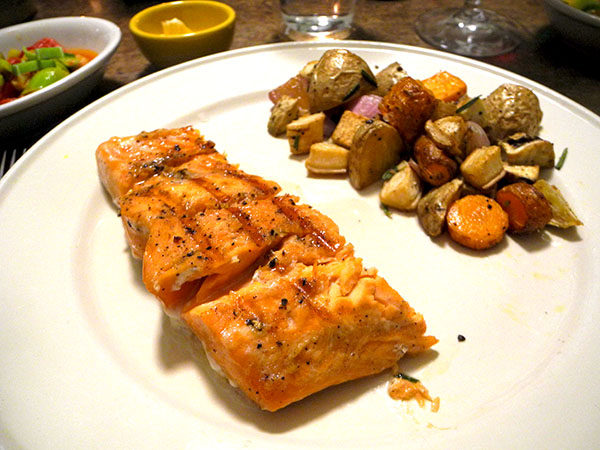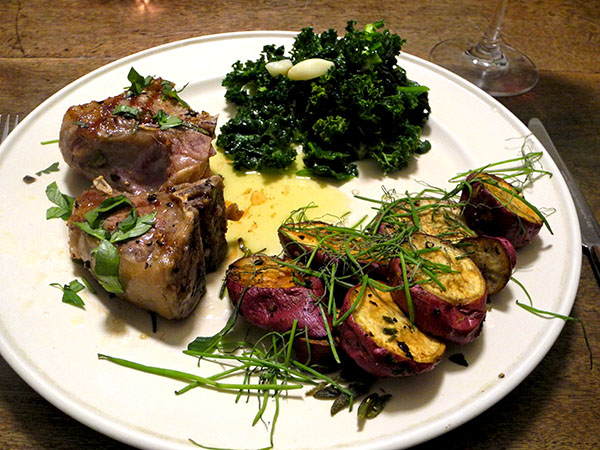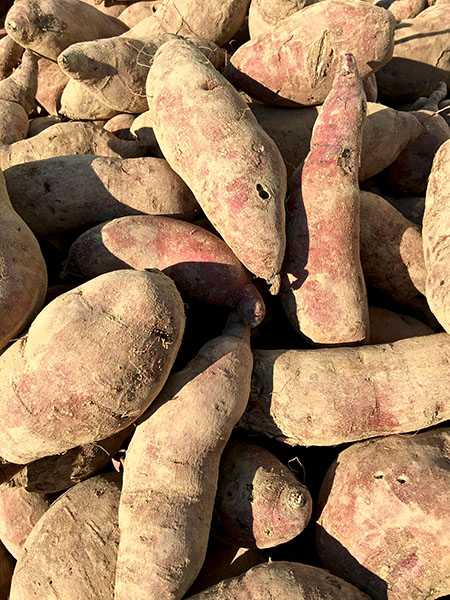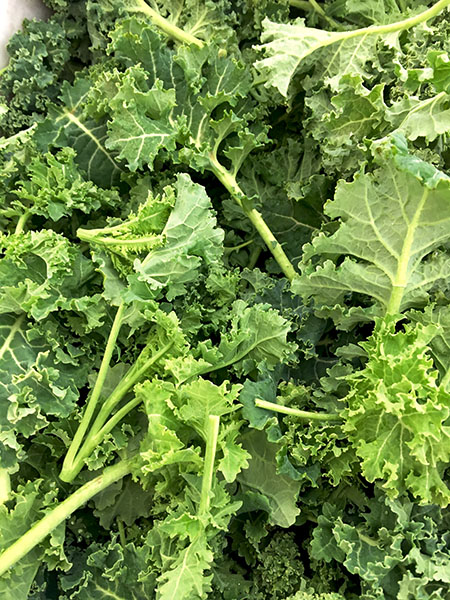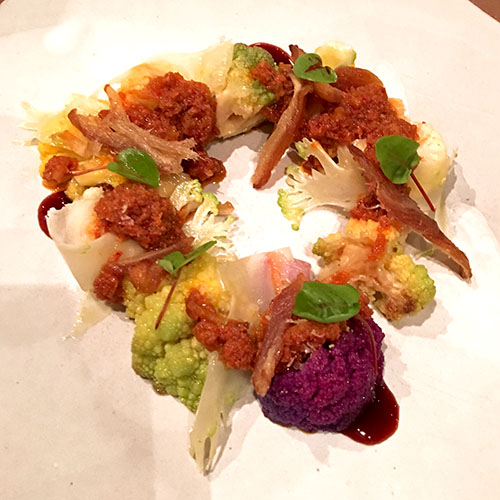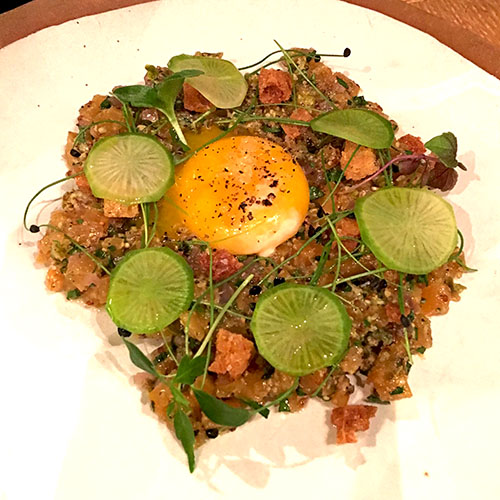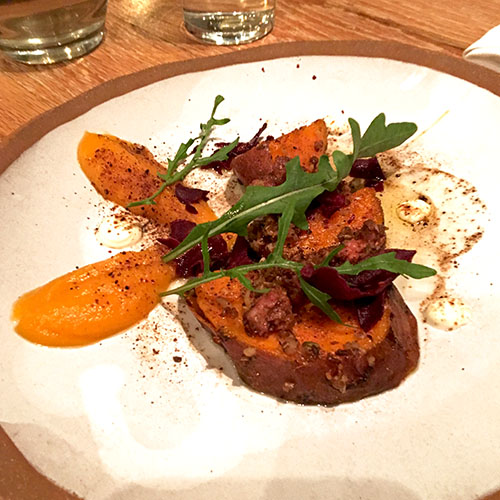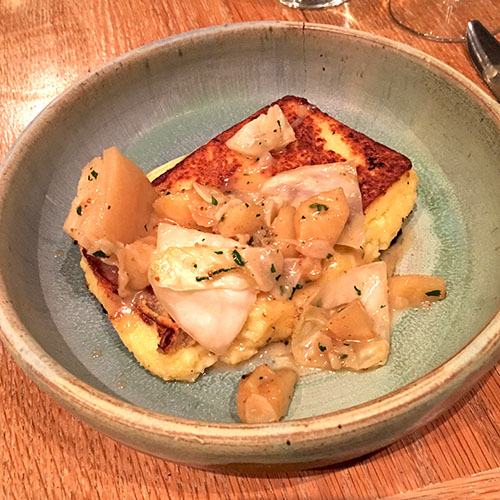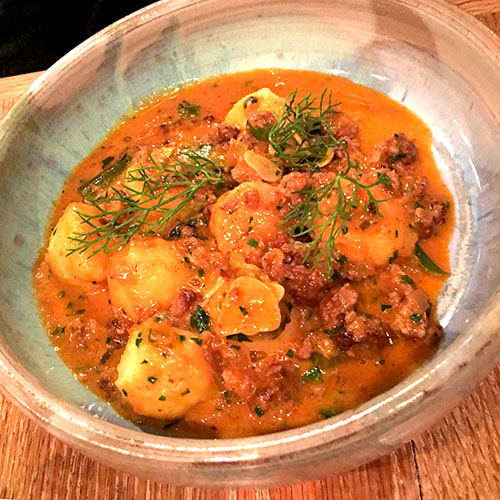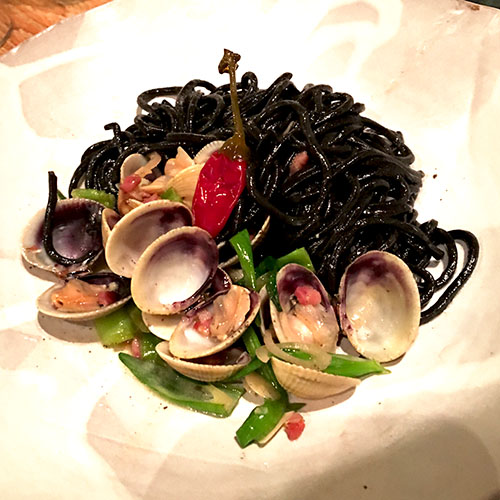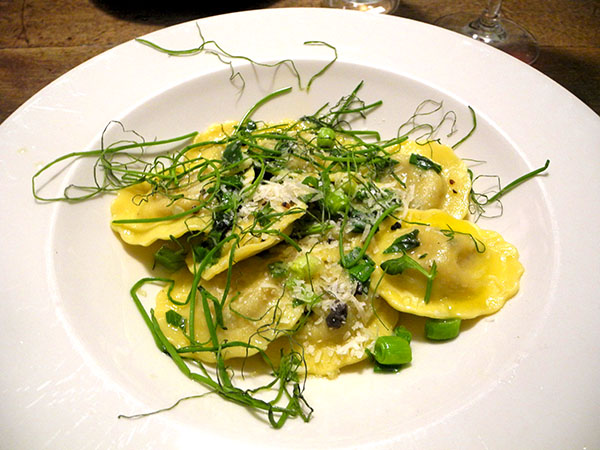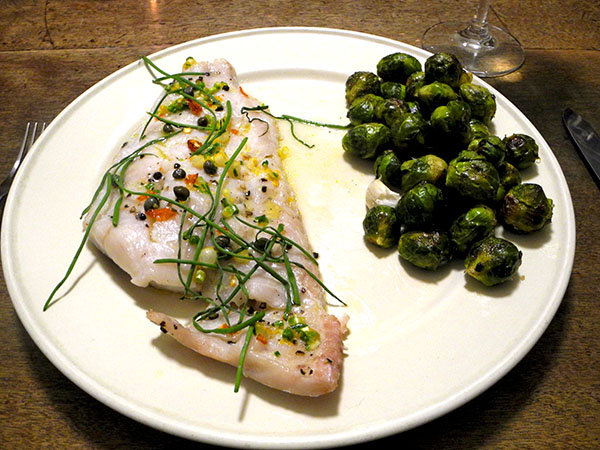
It’s a great fish, and this is a great recipe, especially because it encourages some finely-drawn variations, none of which I think should be considered ‘the standard’.
In honor of these 2 noble fillets, and the delicate condiments with which I decided to grace them, I also added a couple of subtle elements to the yeoman vegetable which accompanied them, Brussels sprouts, which normally, but not always, goes it pretty much alone around here.
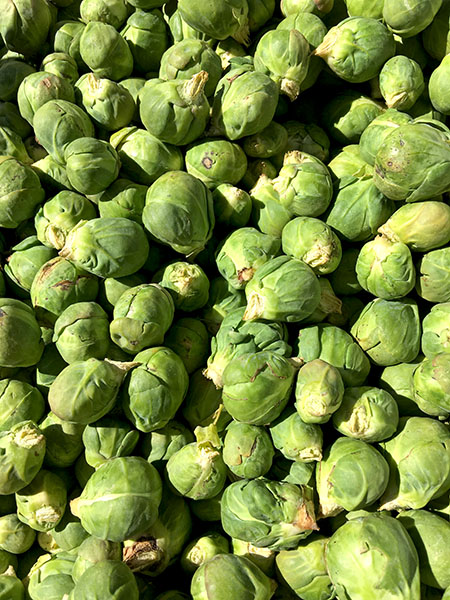
Wild garlic, a harbinger of spring (the season had in fact officially arrived that morning) seems designed to go with this wonderful dish.
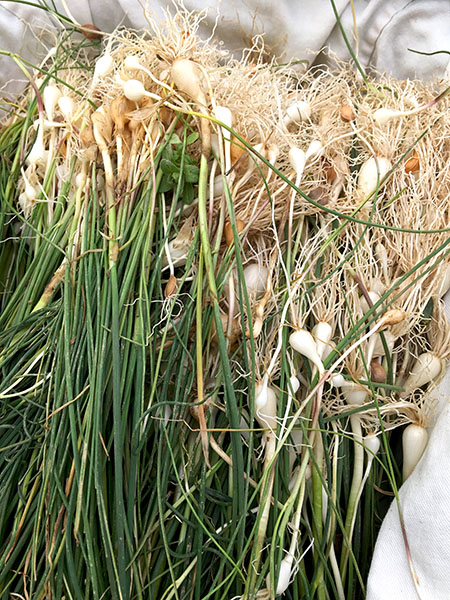
- two pollock fillets (9 ounces each) purchased from Carl Karlin of P.E. & D.D. Seafood in the Union Square Greenmarket, rinsed, dried, seasoned with sea salt and freshly-ground Tellicherry pepper, placed inside a buttered baking dish, skin side down, spread with a mixture of soft butter, zest from a local sweet lemon from David Tifford of Fantastic Gardens of Long Island, slices of wild garlic (bulb and stem) from Lani’s Farm, and a large pinch of crushed orange/gold home-dried Habanada pepper from Norwich Meadows Farm (acquired fresh last season), the fish baked for about 15 minutes at 350º, removed to 2 plates, the cooking juices poured over the top, and a teaspoon of Mediterranean organic wild capers in brine (from a Providence, Rhode Island distributor) rinsed, drained and dried, along with the oil in which they had earlier been heated briefly, the pollock finished with a garnish of cut chives from Phillips Farm
- Brussels Sprouts from Migliorelli Farm, tossed with olive oil, salt and pepper, four unpeeled cloves of garlic from John D. Madura Farm (2 medium, 2 small), a pinch of a crushed dried chili (peperoncino Calabresi secchi from Buon Italia), then spread, not touching each other, onto a large, well-seasoned Pampered Chef oven pan, roasted in at 385º (splitting the difference between the ideal temperature for the pollock and the sprouts) for about 20 minutes until very slightly browned and very slightly crisp on the outside, finished with a squeeze of a local sweet lemon from Fantastic Gardens of Long Island
- the wine was a New Zealand (Awatere Valley, Marlborough) white, Peter Yealands Sauvignon Blanc 2016,from Phillipe Wine
- the music was Handel’s early (1709) opera, ‘Agrippina’, René Jacobs directing the Academy for Ancient Music Berlin
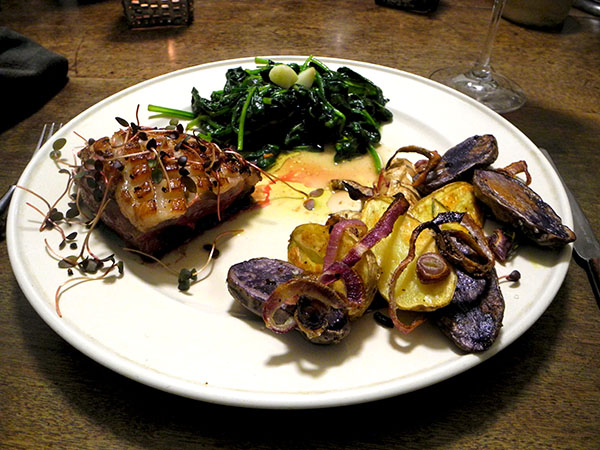
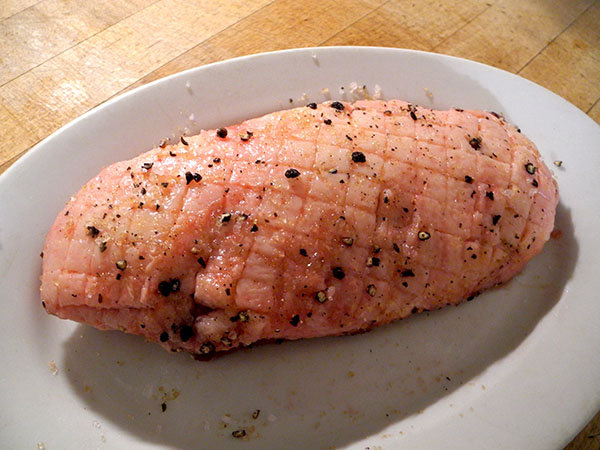
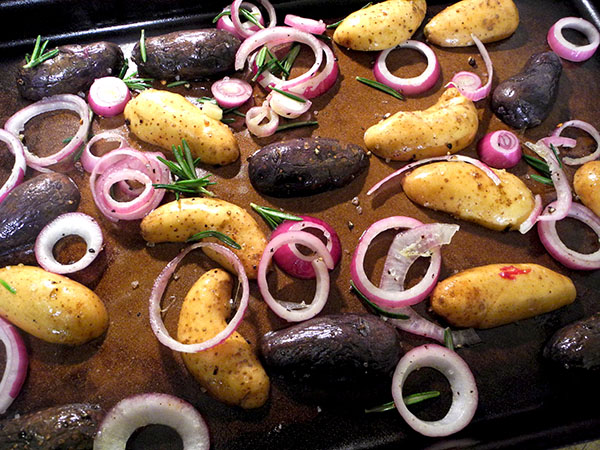
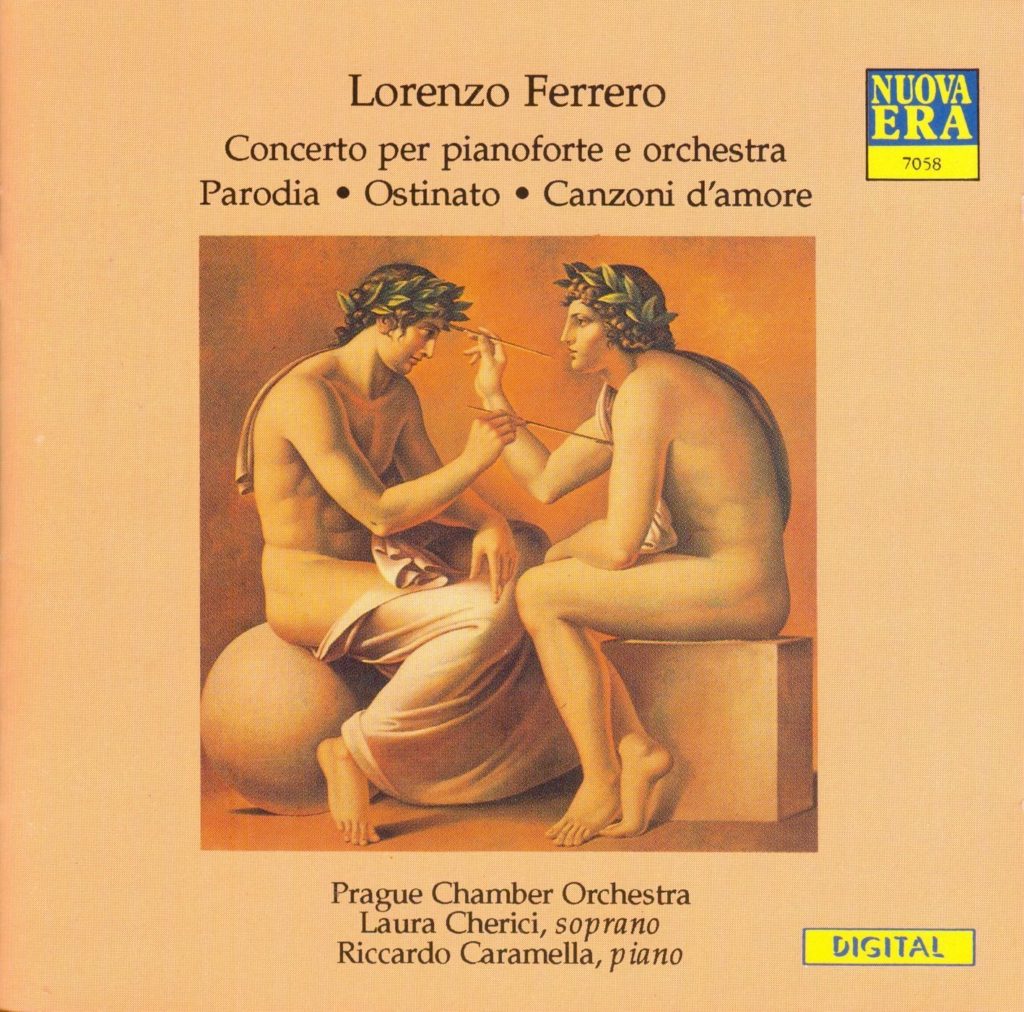
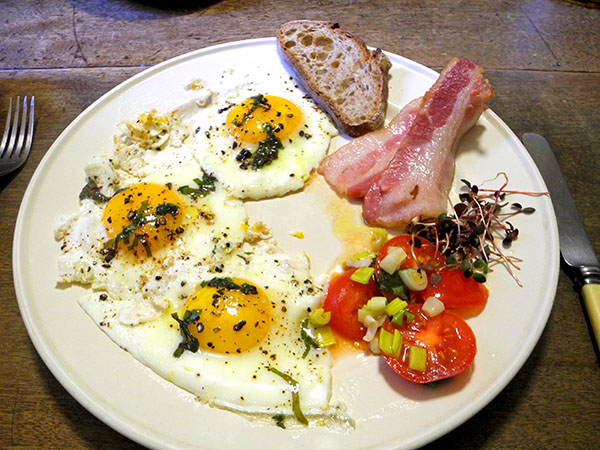
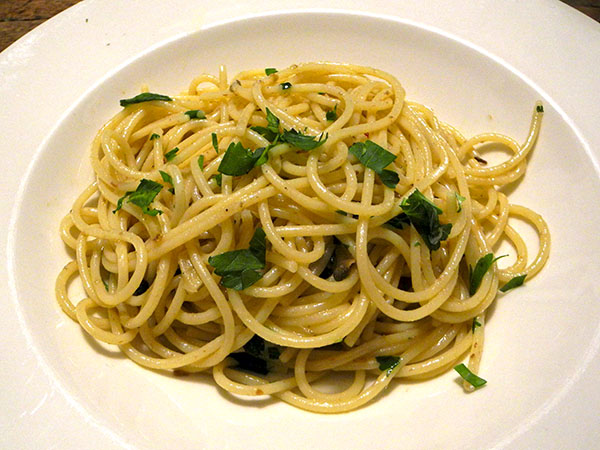

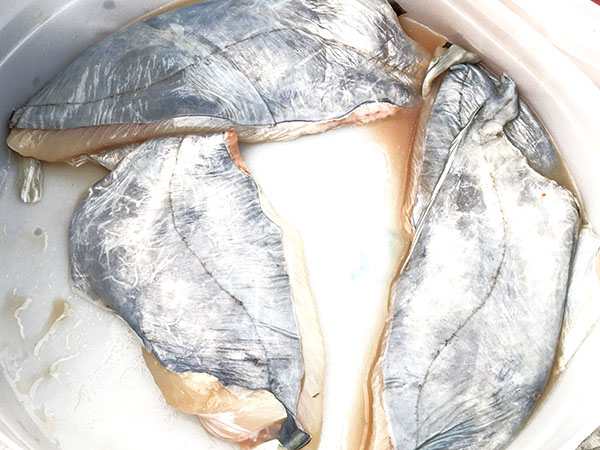
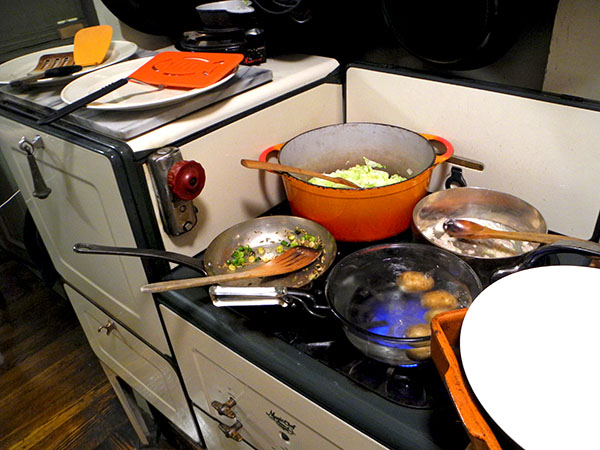
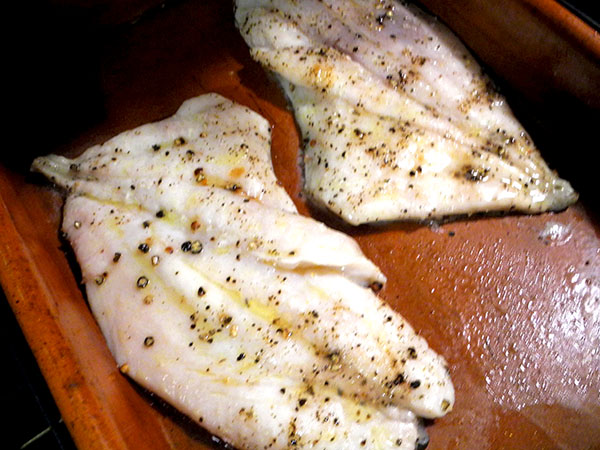
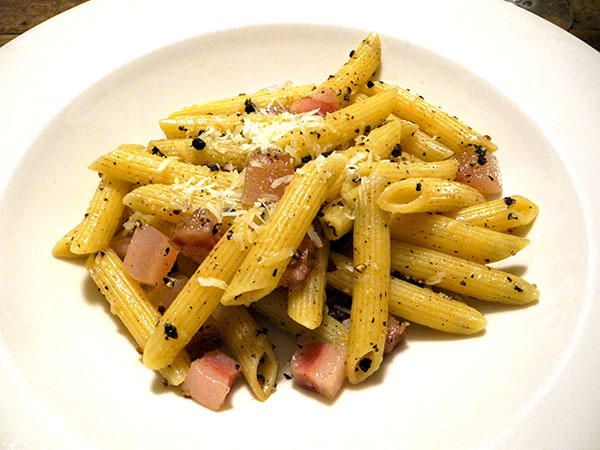 Years ago we used to enjoy this, what I will call ‘perfect meal’, very often, but, maybe because it’s been so long since we were in Italy, or maybe because I’ve become obsessed with cooking local fish, La Gricia seems to have made
Years ago we used to enjoy this, what I will call ‘perfect meal’, very often, but, maybe because it’s been so long since we were in Italy, or maybe because I’ve become obsessed with cooking local fish, La Gricia seems to have made 